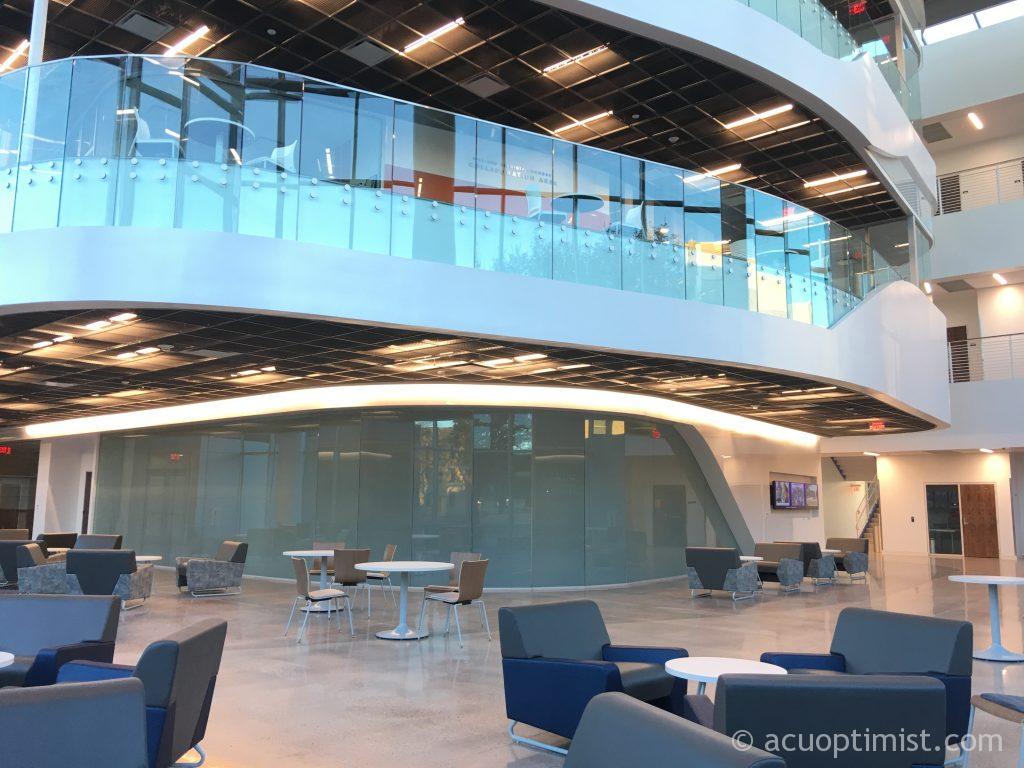The newly completed Halbert-Walling Research Center opened this week for classes, marking the completion of Phase 2 of the university’s efforts to improve science facilities on campus. A part of the Vision in Action science campaign, Halbert-Walling features multiple new labs and three new science classrooms: a 150-seat lecture hall, a 48-seat classroom, and a 75-seat classroom that can be divided into two instructional spaces and serves as the home for the Department of Biology, Department of Chemistry and Biochemistry and the Body and Soul program.
“The faculty and staff in the department of biology, and the departments of chemistry and biochemistry have been so excited about this new space that they’ve gone above and beyond in moving thousands of chemicals and delicate equipment to really convert a new building into an instructional space,” Arrington said.
The 54,000-square-foot center replaced Chambers Hall.
“The focus of this building is hands-on student learning experiences gained through advanced lab facilities and increased research possibilities,” Arrington said.
David Marolf, senior biochemistry major from Melissa, has seen all stages of the university’s science facilities; when he began school, classes were still held in Walling Lecture Hall, which was torn down in Jan. 2015.
“It feels like we left the 20th century and jumped into the 21st century over Christmas break,” Marolf said. “I’m really glad I get to experience this next step for the science departments before I graduate.”
Dr. Greg Straughn, dean of the College of Arts and Sciences, has worked closely with Arrington and other Arts and Sciences faculty on the project.
“I am especially proud of the many hours of work that faculty, staff, and students have provided to make sure the labs were ready for instruction this past Tuesday,” Straughn said in an email. “Given the amount of material needed to move and the complexity of some of the equipment, the move could not have happened without everyone pitching in to help.”
Phase 3 of will involve renovating the interior of the Onstead Science Center. Classes will still take place in Onstead this semester, and construction is set to begin mid-May and is planned to be completed by December 2017. Straughn is also working with administration and other colleges to relocate the departments that will be displaced by the Onstead renovation.
“We are in the process of finalizing temporary locations for faculty and staff,” Straughn said in an email. “These will likely be in locations on campus (within the Lunsford trail) and adjacent to the campus (across the street on Campus Court). Other colleges have been extremely helpful in providing classroom space for Fall 2017, and I am grateful for their help.”

